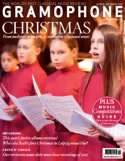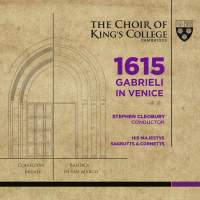Texte paru dans: / Appeared in: |
|
|
Outil de traduction (Très approximatif) |
|
|
Reviewer: David Vickers
From 1585 Giovanni Gabrieli was organist at St Mark’s Basilica and also director of music for the confraternity at the Scuola Grande di San Rocco, where in 1608 the English visitor Thomas Coryat heard three hours of music ‘so good, so delectable, so rare, so admirable…that it did even ravish and stupifie’. Gabrieli’s music can still have the same impact four centuries later, and the range of thrilling sonorities and ceremonial theatricalities in his church music and instrumental – is commemorated in this quadricentenary celebration of two 1615 publications issued posthumously by the composer’s colleagues: seven elaborate polychoral motets, a litany for the Virgin Mary and a grand setting of the Magnificat are taken from the second book of Symphoniae Sacrae, and His Majesty’s Sagbutts & Cornetts take centre stage in four instrumental works from Canzoni et Sonate.
In ecclesiis
never fails to generate an awestruck sense of wonder when the brass chords enter
after the first few vocal solos and choral ‘Alleluia’ refrains; the soloists
Gabriel May (treble), Patrick Dunachie (countertenor) and Toby Ward (tenor) soar
angelically, although the resplendent tutti phrases lack imposing
majesty, rhythmical vigour and theatrical incision. In some respects, The Choir
of King’s College are softer and more consoling than one often hears in this
repertoire, but such an unforced solemnity suits the concentrated low textures
of the all-adult voices in the 12-part Suscipe, clementissime Deus. The
opening of the 10-part setting of Jubilate Deo omnis terra conveys an
imperious swagger, with Cleobury’s surprisingly steady tempo not only suitable
for the reverberant acoustic of the antechapel at King’s College but also a
reminder that St Mark’s Byzantine basilica would have presented similar
challenges to its musicians. It was recorded in the round, and audiophiles will
be attracted to the Pure Audio Blu-ray Disc, which offers an immersive
experience utilising Dolby Atmos technology – but there’s nothing about the
conventional hybrid SACD format that will short-change those wanting to
luxuriate in the glory of late Renaissance Venice. |
|
|
|
|
|
Cliquez l'un ou l'autre
bouton pour découvrir bien d'autres critiques de CD |
|




